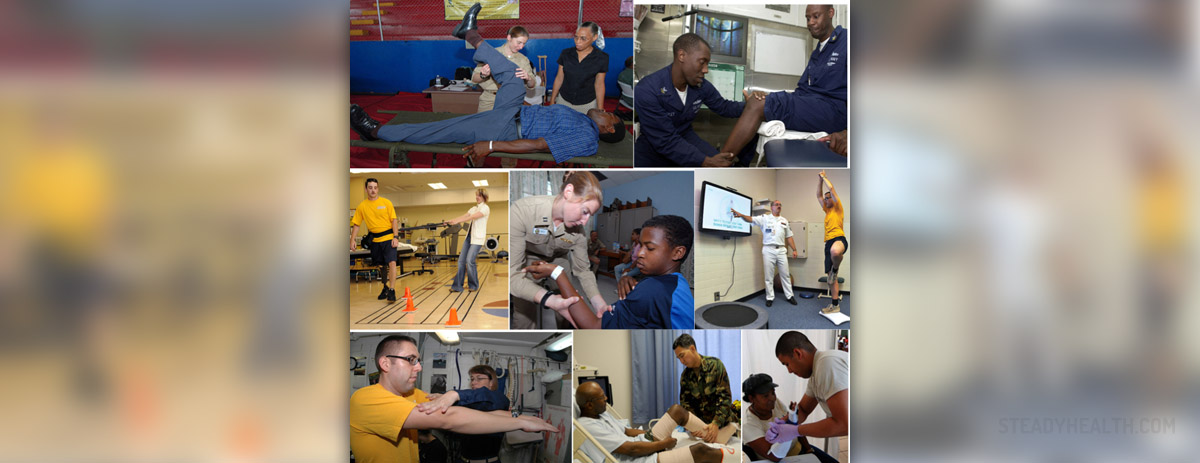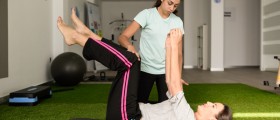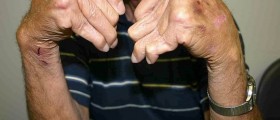
Osteoarthritis of the knee is often seen in individuals between 60 and 90 years of age. According to available data, 30% of people of this age experience certain problems due to osteoarthritis of the knee. This condition itself does not allow a person to walk normally, stand normally or climb the stairs. In the majority of cases symptoms of inflammation are easily brought under control with acetaminophen and other non-steroidal anti-inflammatory drugs. However, there are additional treatments that may be of great help and are generally recommended by most doctors. These include physical therapy, exercise, cortisone injections and finally, if all else fails, joint replacement surgery. Exercises are definitely a cornerstone of the treatment for osteoarthritis of the knee.
Osteoarthritis Problems
There was a study conducted which involved 83 patients who were diagnosed with osteoarthritis of the knee. The goal of the study was to make a comparison between a fixed therapeutic regimen for the knee, hip or ankle and a placebo. The patients were divided into two groups. One of the groups received treatment and the other placebo. Better function of the knee, alleviated pain and stiffness and improved walking distance during a period of 6 minutes were the end points of this study. One group received a mix of manual physical therapy and supervised exercise. The placebo group underwent ultrasound therapy at a subtherapeutic intensity. All the participants received treatment two times a week for a period of one month. The patients returned again after a period of one year for additional tests and to be determined who should undergo the surgery. Those who received proper treatment showed excellent progress and were able to cover more distance in 6 minutes. On the other hand, patients who were on placebo had more knee surgeries than the treatment group and covered less distance than the other group in 6 minutes. This study proved that there is evident progress associated with physical treatment and patients who exercise many times do not have to undergo knee surgery.
Physical Therapy for Osteoarthritis
When a person is diagnosed with osteoarthritis of the knee, the doctor will recommend physical therapy or occupational therapy. The patient may actually need both of these therapies in order to make some progress and avoid knee surgery. Stiff joints are usually the most serious problem of all osteoarthritis patients mainly because these people avoid movement whenever possible. They avoid movement since this activity is associated with pain. Still, they do not realize that by moving less their joints will become even more stiff. This is one of the main reasons why patients diagnosed with osteoarthritis gain a lot from physical therapy. There is no danger of further damaging the affected joint because the physical therapist will show the patient how to properly do the exercise. Physical therapy is not only useful in situations when a patient suffers from osteoarthritis but it is equally beneficial after one has experienced certain injuries, a fall for example. Those who undergo artificial joint replacement benefit a great deal from physical therapy too.
Patients who undergo occupational therapy will learn how to lessen the strain on the joints which occurs during every day activities. An occupational therapist is quite helpful because he or she will show the patient how to make certain changes at home and workplace in order to reduce those motions which put stress on the painful joints. The use of splints also falls under occupational therapy.
The main purpose of physical therapy is to allow such patients to be able to perform everyday activities without feeling pain or having some other problems. In order to achieve this, patients needs to keep good range of motion. This drives to conclusion that the main goal of physical therapy is to increase that range of motion. The muscles which surround the affected joint need to become stronger so this would be another field of interest of a physical therapist. Stronger muscles provide more stability to the hurting joint.
The benefits of both occupational therapy and physical therapy are countless. First of all, the patient suffering from osteoarthritis of the knee will learn all there is about the specific condition he or she is afflicted with. Furthermore, obese patients are routinely prescribed with a special dietary plan in order to lose excess weight. Losing weight is a vital part of the treatment because this way the additional stress on the supporting joints of the backs, legs and feet significantly reduces. It is often the case that the patient receives a foot-care advice in the form of well-fitting shoes with outer soles which absorb shock and specially molded insoles for the foot of the particular patient. In addition, each and every patient will get familiar with various available therapeutic methods which might help him or her get rid of discomfort when it occurs.



-Symptoms,-Diagnosis,-Treatment_f_280x120.jpg)













Your thoughts on this
Loading...